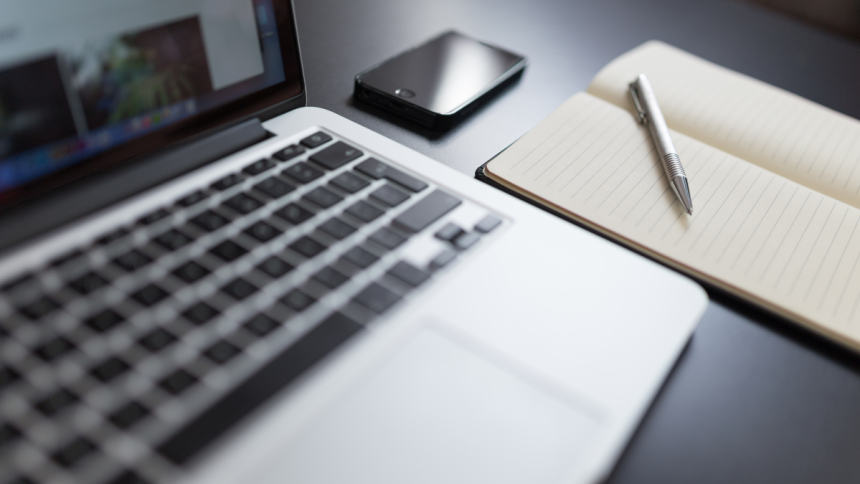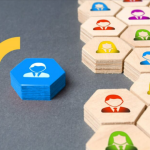Not all notes are created equal. The medium you use—digital or paper—shapes everything from focus levels to follow-up actions. Below is a quick-scan guide to help you pick (or blend) the approach that keeps your meetings productive and your knowledge organized.
Why the Decision Matters
- Retention & comprehension. Hand-written notes stimulate more brain regions associated with memory formation than typing.
- Speed & searchability. Typing averages ≈ 40 wpm vs. handwriting’s ≈ 17 wpm, yet 65 % of students still prefer digital tools for convenience.
- Industry norms. In fields like law, almost 75 % of professionals still rely on legal pads or paper notebooks.
Paper Notes: The Analog Advantage
Pros
- Deeper cognitive processing
Writing by hand forces summarization, improving understanding and recall. - Distraction-free
No pop-ups, notifications, or battery anxiety. - Visual flexibility
Sketch ideas, mind-map, or annotate margins instantly.
Cons
- No instant search. Flipping pages eats time.
- Version control headaches. Multiple copies require manual consolidation.
- Limited sharing. You’ll need to scan or photograph to circulate minutes.
For a more in-depth analysis on this, check this nice article about how to take meeting notes.
Digital Notes: The Pixel Powerhouse
Pros
- Rapid capture & re-use
Type fast, copy-paste action items into project boards, and set reminders on the fly. - Search & tags
One keyword surfaces every related meeting in seconds. - Collaboration-ready
Cloud sync lets teammates comment or co-edit in real time—ideal for hybrid teams.
Cons
- Potential for distraction. It’s easy to tab over to email.
- Battery & tech glitches. A dead laptop = lost access.
- Shallow processing risk. Verbatim typing can reduce conceptual learning.
Wondering which service is better for you to take digital notes? This article compares the best AI note-takers available on the market.
Key Factors to Weigh
| Factor | Go Paper If… | Go Digital If… |
| Meeting Type | Strategy, brainstorming, 1-on-1 coaching | Status updates, sprint planning, webinars |
| Need for Sharing | Low | High |
| Environment | No outlets / strict device policy | Remote or hybrid |
| Personal Learning Style | You learn by drawing or writing | You prefer typed outlines & quick search |
Hybrid Hacks: Best of Both Worlds
- Start Analog, Finish Digital
Capture ideas on paper, snap a photo into your notes app, then tag it for follow-up. - Tablet + Stylus
Tools like reMarkable or iPad + Apple Pencil deliver handwriting feel plus cloud backup. - Smart Pens & Notebooks
Livescribe or Rocketbook instantly upload pen strokes to the cloud—no re-typing.
Actionable Tips for Superior Meeting Notes
- Prep a template. Outline agenda items beforehand (digital or printed) to guide note-taking.
- Mark “next steps” in real time. So you can easily follow up when reviewing.
- Review within 24 hours. Reinforces memory and lets you clarify ambiguous points while they’re fresh.
- Archive systematically.
- Paper: file by project or date in clearly labeled binders.
- Digital: adopt a consistent tag or folder hierarchy (e.g., /Meetings/Client/2025-05-29).
- Paper: file by project or date in clearly labeled binders.
Bottom Line
- Choose Paper if deep thinking, ideation, or device-free attention is paramount.
- Choose Digital for speed, searchability, and teamwork.
- Blend when you want handwritten clarity without sacrificing cloud convenience.
Whichever route you take, commit to a review routine and a clear storage system – those two habits turn raw scribbles (or keystrokes) into actionable insights that move projects forward.
Lynn Martelli is an editor at Readability. She received her MFA in Creative Writing from Antioch University and has worked as an editor for over 10 years. Lynn has edited a wide variety of books, including fiction, non-fiction, memoirs, and more. In her free time, Lynn enjoys reading, writing, and spending time with her family and friends.















